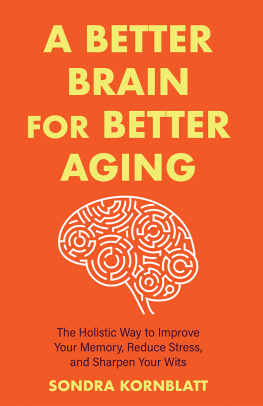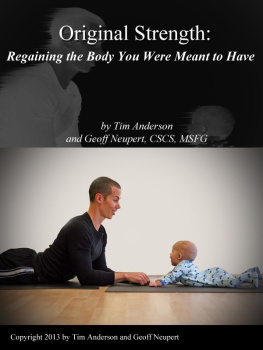About the CSCS
Now toward the end of this book I might be a little, shall we say, mildly disparaging of the state of personal training (as well as a few other fields), and I might not speak in the kindest of regards for the associated certifications. However, of whats out there, I feel that if any are worthwhile, the National Strength and Condition Associations (NSCA) Certified Strength and Conditioning Specialist (CSCS) is about as good as it gets. The CSCS is the only strength training and conditioning certification thats nationally accredited by the NCCA, and requires a Bachelors to even sit for it. And you have to re-qualify every three years, so in theory you have to stay current on information and wont be pushing some outdated middle school football coach crap at people. Its not perfect, but its a step in the right direction of establishing a baseline of education. And Im not just saying that to polish up my own little honorific that I put on the cover; there are doubtless CSCS holders who are rubbish as well. Your best way of identifying a legitimate trainer isnt a title; its knowing enough that you recognize when somethings wrong. And Im hoping to help you out with that right now.
9: Resistance Training
The full squat is a perfectly natural position for the leg to occupy. Thats why theres a joint in the middle of it, and why humans have been occupying this position, both unloaded and loaded, for millions of years. Much longer, in fact, than quasi-intellectual morons have been telling us that its bad for the knees.
- Mark Rippetoe
Much to the dismay of some readers (though I soon hope to assuage your fears), physical training by carrying and moving substantial weight is an essential part of any proper program, and virtually everyone can and will benefit from weight training. Resistance training is critically important for both males and females (and everyone in between) of any age, from five to eighty-five and up.
As a precaution, you should consult your doctor prior to beginning resistance training. But lets be straight: millions of people dont have health insurance to begin with, and there are plenty of miseducated quacks running around telling people contrary or even harmful information. So, if you have health problems that would be exacerbated by doing anything that follows, please dont do it. But virtually anyone will benefit greatly, so that probably includes you. When it doubt, check with someone who knows you better than I do. Like a doctor.
To some, resistance training, also known as weight-lifting, conjures up the intimidating scene of iron plates and bars, banging and clanking about under the guidance of straining and grunting ape-men with sweaty, creased faces and anger management problems. Others might see it as an endless sea of padded machines designed to mimic every little possible isolated movement of the body.
In actuality, you can be an accomplished weight-lifter and have a healthy, lean, and powerful body without ever touching an iron weight (or a machine). Utilizing resistance to challenge your body can (and should) be done in a variety of ways, with objects of different sizes, shapes and weights. From bottles and bags filled with water or sand, wheel barrows, and even other people, your home and the world at large is full of obnoxiously heavy things, and several reputable training methodologies suggest that moving cumbersome or unwieldy objects actually enhances more significant progress than lifting a similar amount conventionally (and still better than any machine can mimic). This would lend credibility to the underground strength and Strongman communities that orient around lifting kettle-bells, flipping tractor tires, throwing kegs and other unconventional (and arguably more imaginative and engaging) types of weight and resistance.
A word on weight training
Despite having stipulated that conventional weights are unnecessary, the reality is that since weight equipment itself is specifically designed and engineered for lifting, it is extremely convenient to control, manage, manipulate and put to use.
Training with free weights, specifically barbell and dumbbell training, is as much a sport, a hobby, or a way of life as baseball or cross-country running. While I (and many other iron enthusiasts) can and will fantasize of a world filled with gymnasiums, and a picturesque citizenry not unlike moving Greek sculptures, replete with massive shoulders and chiseled abs, the plain truth is that not everyone has the same dream, and even fewer want to commit the time and effort required to achieving that dream. In that spirit, allow me to once again reiterate some common misconceptions and concerns before we get to it:
- Do not worry about getting big. Or getting bulky on any weight training program. If youve ever deliberately tried to get big, chances are you recognize it is a hard thing to accomplish at any rate. Oh god Im getting too big too fast would get you a dirty look from anyone actually trying (or who has ever tried) to gain significant size. Women in particular have almost no chance of gaining any size of noteworthiness; lacking more than trace amounts of testosterone, womens strength and ability increases with scarcely a nod toward hypertrophy. This means that women can lift in ratios similar to men without the accompanying increases in size or bulkiness. No one is in danger of losing any femininity by lifting real weights.
- Toning exercises are fiction. Toning is a persistent buzzword with no meaning. There are three basic stages or zones for resistance training: maximal strength, hypertrophy (size gains as applied to men), and muscular endurance. Anything beyond that is simply a grossly inefficient form of aerobic exercise. Please never, ever do workouts consisting of a great many repetitions with single-digit dumbbells; there are few bigger wastes of time available (short of doing nothing). Most toning exercises (tiny dumbbells, high numbers of reps), especially upper arm exercises, arent even much good as a General Movement.
- To date, there is no gadget or device as good as just lifting up some thing heavy with your body. Really. Despite the admittedly lackluster efforts of science and technology, youd be better served by picking up a large rock, pushing a wheel barrow around, or doing squats with your child, spouse or friend on your back than doing any goofy late-night-infomercial video routine, wheel, chair, or other garbage. Dont get me wrong; I love science and technology, but Rocky IV didnt lie to youRockys honest, simple workout of sprinting up a snow-covered mountain and doing sit-ups from a hay loft served him better than all the scientific treadmill chemical soldier antics of Ivan Drago. Machines are awful. Dumbbells, iron plates and free weights are great for strength training, and have the simple convenience of measurement and manipulation; however, they are in no way mandatory.
At the end of the chapter is an afterword that briefly touches on gyms and fitness professionals. You should not feel obligated in any way to either purchase any equipment or to pay a monthly or yearly fee to a facility that provides such. However, should you already own or have access to such equipment, then by all means incorporate their use. I hope this chapter will provide you with enough working knowledge to qualify a trainer should you elect to employ one.
Regarding machines, cables, and devices
To maximize efficiency and success in physical strength training, the easiest solution is to just avoid machine weights entirely. This applies whether it is a cable-and-cam machine that uses a stack of weights, or a single-plane device such as a bench press on rails that is severely restricted in movement despite using plates.










